
It's a very busy year in space for 2019! Follow along here
Looking forward to all the cool stuff going on in space in 2019? It's going to be an exceptionally busy year, so here's your month to month guide of what to watch out for!
Satellite launches, astronomical events, off-world exploration, and even the next steps by SpaceX and Boeing to launch people into orbit from the United States. The next year promises to be an amazing one for space.
Space and Astronomy Highlights
Jan 1 - New Horizons encounter with MU69
Jan 3 - China lands on the far side of the Moon
Jan 20-21 - Super Blood Wolf Moon Total Lunar Eclipse
Feb 19-20 - Closest and Brightest Full Moon of 2019
Feb 20-21 - Hayabusa 2 first sample collection from asteroid
Feb 21 - SpaceX launches Israeli moon lander
Feb 26 - InSight drills into Mars
Feb 28 - OSIRIS-REx begins mapping asteroid Bennu
Mar 2 - SpaceX DM-1 uncrewed Crew Dragon test launch
~~Apr 4 - Parker Solar Probe perihelion #2 ~~
Apr 8 - Canadian astronaut David Saint-Jacques' first spacewalk
Apr 11 - Israel's Beresheet lander attempts touch down on the Moon (Crashed)
Apr 11 - First Falcon Heavy operational launch
~~May 18-19 - Honest-to-goodness 'Blue Moon' ~~
June 11 - SpaceX launches Canadian RADARSAT Constellation
Jun 24 - David Saint Jacques returns to Earth
Jul 2 - Total Solar Eclipse (south Pacific and South America)
Jul 22 - India launches Chandrayaan-2 mission to the Moon
Jul 16-21 - 50th anniversary of Apollo 11 Lunar Mission
Aug 20 - Orbital insertion for Chandrayaan-2
Sep 1 - Parker Solar Probe perihelion #3
Sep 7 - Possible lunar landing date for Chandrayaan-2
Sep 17 - Earliest uncrewed test launch of Boeing CST-100 Starliner
Oct 2 - Operational SpaceX Crew Dragon flight to ISS
Nov 11 - Transit of Mercury
Nov 15 - Target date for crewed SpaceX Dragon launch
Nov 14-19 - 50th anniversary of Apollo 12 Lunar Mission
Bonus (New Moon Landings?)
JANUARY
New Horizons flies past MU69
In the very first hours of 2019, NASA's New Horizons spacecraft, roughly 1.6 billion kilometres past its 2015 encounter with Pluto, flew past what is now the farthest explored object in the solar system.
Kuiper Belt Object 2014 MU69 was suspected of being a binary object of some kind, either 'contact' or 'near' - essentially, two different objects, of two different sizes, that orbit each other so closely as to either touch, or nearly touch.
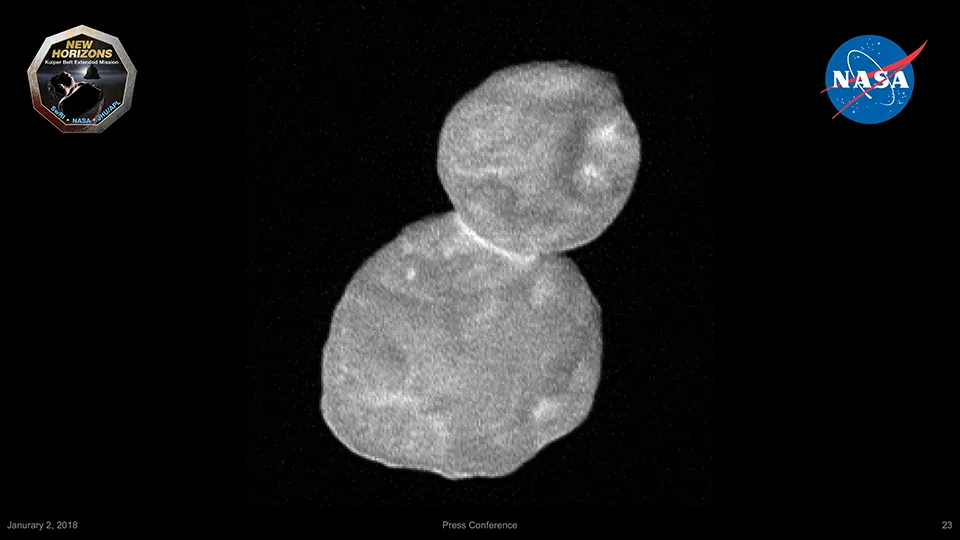
KBO '2014 MU69', aka "Ultima Thule", as imaged in detail by New Horizon's LORRI camera, on Jan 1, 2019. Credit: NASA/Johns Hopkins University Applied Physics Laboratory/Southwest Research Institute
When New Horizons flew past, and snapped pictures, this suspicion was confirmed, as it was shown to be two fairly pristine dirty snowballs, likely untouched since the dawn of our solar system.
Read more about this amazing encounter, and the subsequent updates, and keep an eye out for more coming from New Horizons!
China makes 1st landing on the far side of the moon
Soviet Russia was the first nation to capture images of the far side of the Moon, in 1959, and the first to have a robot orbit the Moon, in 1966. America was the first to have people see the far side for themselves, from Apollo 8 in 1968, and was the first to set boots on the near side of the Moon, with Apollo 11 in 1969. Now, China is the first nation, ever, to land a mission on the far side of the Moon.
Chang'e 4, a lander named after the Chinese goddess of the Moon, touched down in Von Kármán Crater, in the southern hemisphere of the Moon's far side, in the morning hours of January 3, 2019.
Shortly thereafter, it disgorged the Yutu-2 (Jade Rabbit 2) rover, which then began to explore the surface around the landing site.
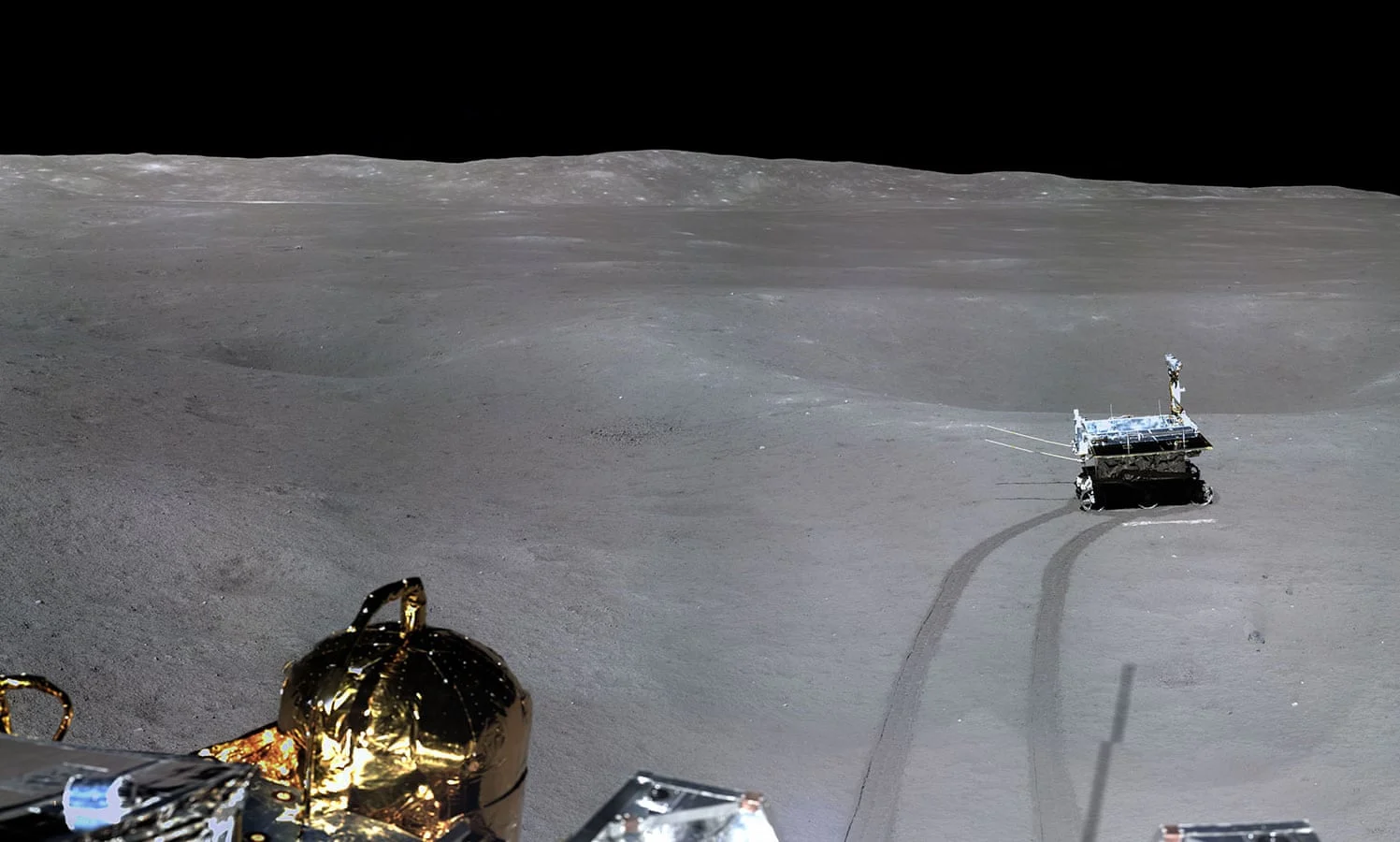
The Yutu-2 rover begins exploring the far side of the Moon. Credit: CNSA/CLEP
Why the "Far Side of the Moon", not "The Dark Side of the Moon"? The Moon does have a dark side. It's just that - just like Earth - the dark side of the Moon is constantly on the move. Originally, the term "dark side of the Moon" was more about the lack of information about that side of the Moon. Once we saw the other side of the Moon for ourselves, it just became more appropriate to use a more literal use of the term, and since all sides of the Moon receive the same amount of sunlight over a month, "far side" just became more meaningful.
Anyway, read more on this very cool mission, and watch for more images to come!
Super Blood Wolf Moon Total Lunar Eclipse
This is really the event to watch for in the night sky for Winter 2019, since the Total Lunar Eclipse will be visible all across Canada, on the night of January 20-21.

You'll see this eclipse referred to as the 'Super Blood Wolf Moon' across media and social media, around the world, now. It's a hokey, and silly, but undoubtedly popular name (which you probably heard here first), with some dubious origins, but it's going to be a pretty cool event!
Read more, and hope for clear skies that night! The eclipse reaches its peak at just after midnight, Eastern Standard Time!
FEBRUARY
Perigee Full Moon 2019
We typically see three 'supermoons' every year, but there's only one 'Perigee Full Moon' - the closest, biggest and brightest Full Moon of the entire year.

The February 19 Full Moon, and all the details about it. Credit: NASA's Scientific Visualization Studio
A fun note about the above image: in the schematic to the bottom left, if both the yellow and blue dots overlapped perfectly, we would have another Total Lunar Eclipse! The yellow dot represents the point of the lunar surface that is centred on the Sun, and the blue dot is the point on the surface that is centred on the Earth. Even the tiny offset between the two shows us just how narrow the margin is for having a lunar eclipse!
Hayabusa 2 first asteroid sample collection
Japan's space probe Hayabusa 2 arrived at asteroid 162173 Ryugu in June of 2018, to begin mapping the surface, and setting down a trio of tiny hopping rovers to explore its features.
One function of the landers was to locate a suitable spot for the spacecraft to pick up a sample of the asteroid, for eventual return to Earth.
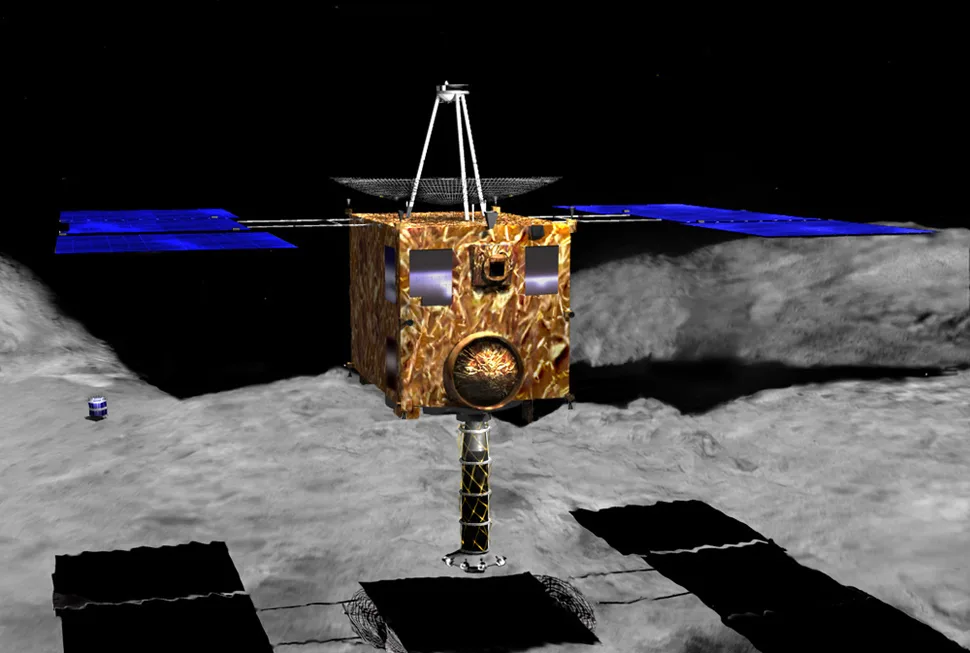
This artist conception drawing shows Japan's Hayabusa 2 hovering over the surface of asteroid Ryugu, as it retrieves a sample of the surface. Credit: JAXA
By now, according to the original plan for this mission, Hayabusa 2 was supposed to have already gathered its first sample. Upon seeing the data returned from the rovers, however, the mission team could not actually see a good place to sample the asteroid's surface material (known as regolyth). All they spotted were rocks and boulders.
Therefore the team decided to delay this operation until at least February.
On February 19-20, the spacecraft descended to the asteroid, shot a special bullet into the surface to blast away enough matter for a sample, and then retreated back into orbit.
Israel launches lander to the Moon
Remember the Google Lunar XPrize, where several university and industry teams were racing to see who could launch a robotic mission to the Moon, including a lander and a rover, before March 31, 2018?
Although none of the teams actually made the deadline for the contest, a few of these teams are apparently scheduled to complete their missions this year, regardless.
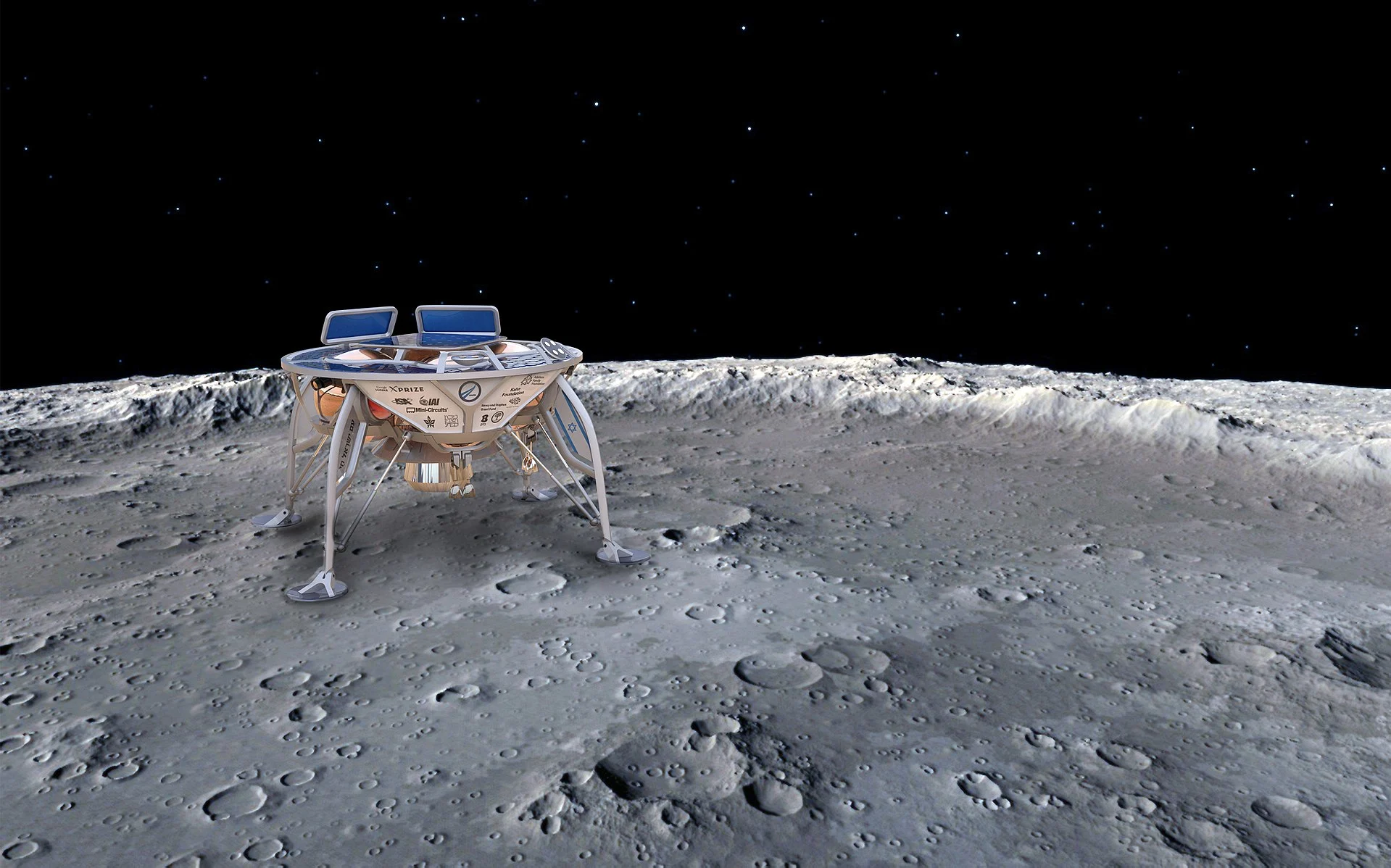
This artist's conception drawing shows the SpaceIL lander on the surface of the Moon. Credit: Oshratsl/Wikimedia Commons (CC BY-SA 4.0)
Israel's SpaceIL Beresheet lander launched atop a SpaceX Falcon 9 rocket, on February 21, 2019.
According to the SpaceIL team, Beresheet will slowly make its way towards the Moon, with the intention to set down in Mare Serenitatis (the Sea of Serenity), on the near side of the Moon, sometime in April.
OSIRIS-REx maps asteroid Bennu
Now that NASA's OSIRIS REx spacecraft slipped into orbit around asteroid Bennu on December 31, 2018, it is set up to begin one of its primary missions.
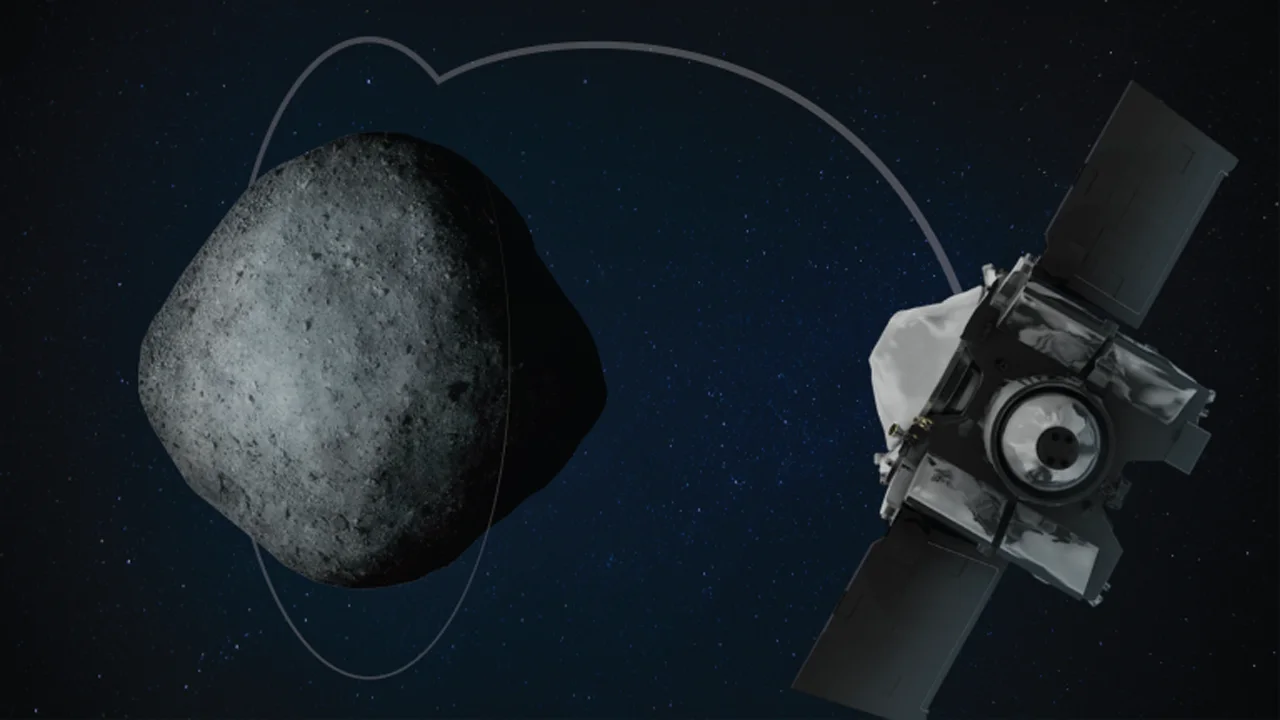
This artist conception drawing shows OSIRIS-REx entering into orbit around Bennu. Credit: NASA
One of two spacecraft that are directly exploring an asteroid (read on), OSIRIS-REx began mapping out Bennu's surface, in detail, starting on February 28.
Stand by for some amazing imagery to be returned from this mission!
MARCH
First uncrewed SpaceX 'Crew Dragon' test launch
For years, astronauts from around the world have been relying on Russia's Soyuz launches to get to the International Space Station and back. This will soon change, however, as two American companies are currently working on systems that will, once again, have spacelings launching into orbit from the United States.
SpaceX will be the first in 2019 to take the next step in the process, as they plan on launching an un-crewed test of their new Crew Dragon spacecraft.
Originally scheduled for January 17, the Demo-1 launch (aka DM-1) was pushed to very early in the morning, on Saturday, March 2.
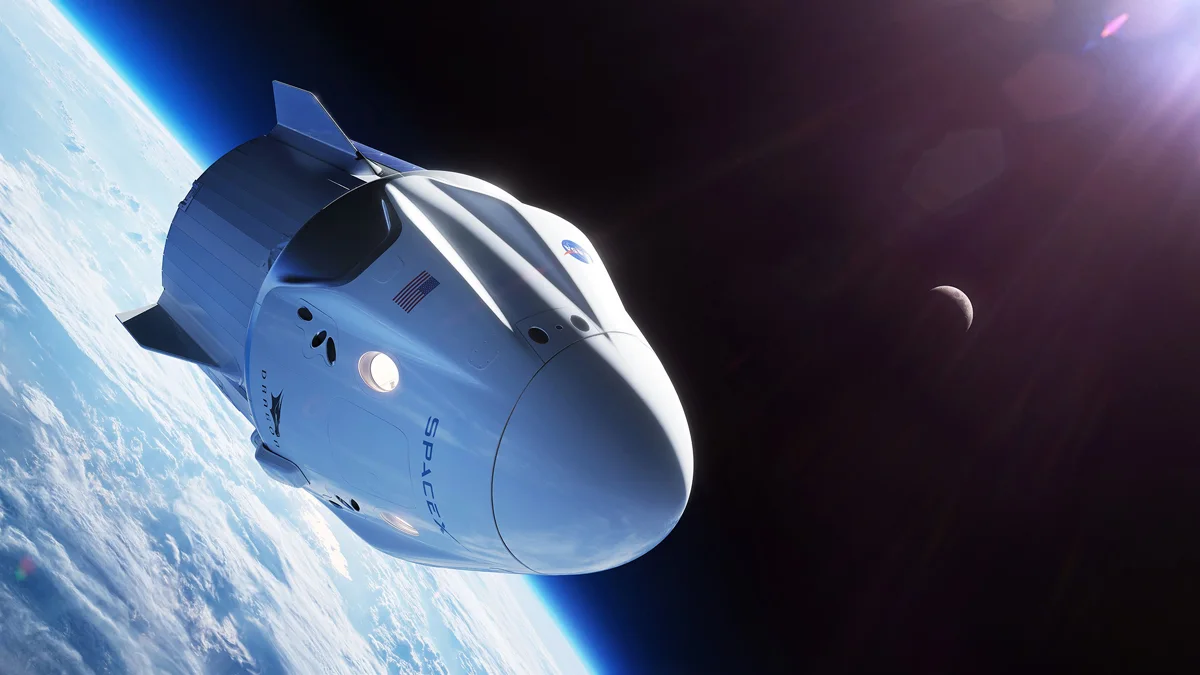
A simulation of the Demo-1 launch of the Crew Dragon into space. Credit: SpaceX
We've seen abort tests and other events leading up to this, but this is to be the very first complete launch into orbit (potentially rendezvousing with the International Space Station). The only thing that will be lacking, at this point, is people on board. That extra bit will have to wait until later this year (hopefully in June).
Tune in on Friday, March 1 for prelaunch materials broadcast on NASA TV, and then starting at around or shortly after 2 a.m. ET, Saturday, March 2, for live coverage of the 2:49 a.m. ET launch.
(Related: SpaceX Crew Dragon is go for launch on first flight to space)
NASA InSight drills into Mars
NASA's latest Mars explorer - the InSight lander - touched down in Elysium Planitia on November 26, 2018.
The lander set its seismometer (the primary reason for the mission) on the surface on December 20, 2018, placed the Wind and Thermal Shield (WTS) over the instrument on February 2, and it transferred its Heat Flow and Physical Properties Probe (aka HP^3, aka the Heat Flow Probe) from the lander deck to the ground on Feburary 12.
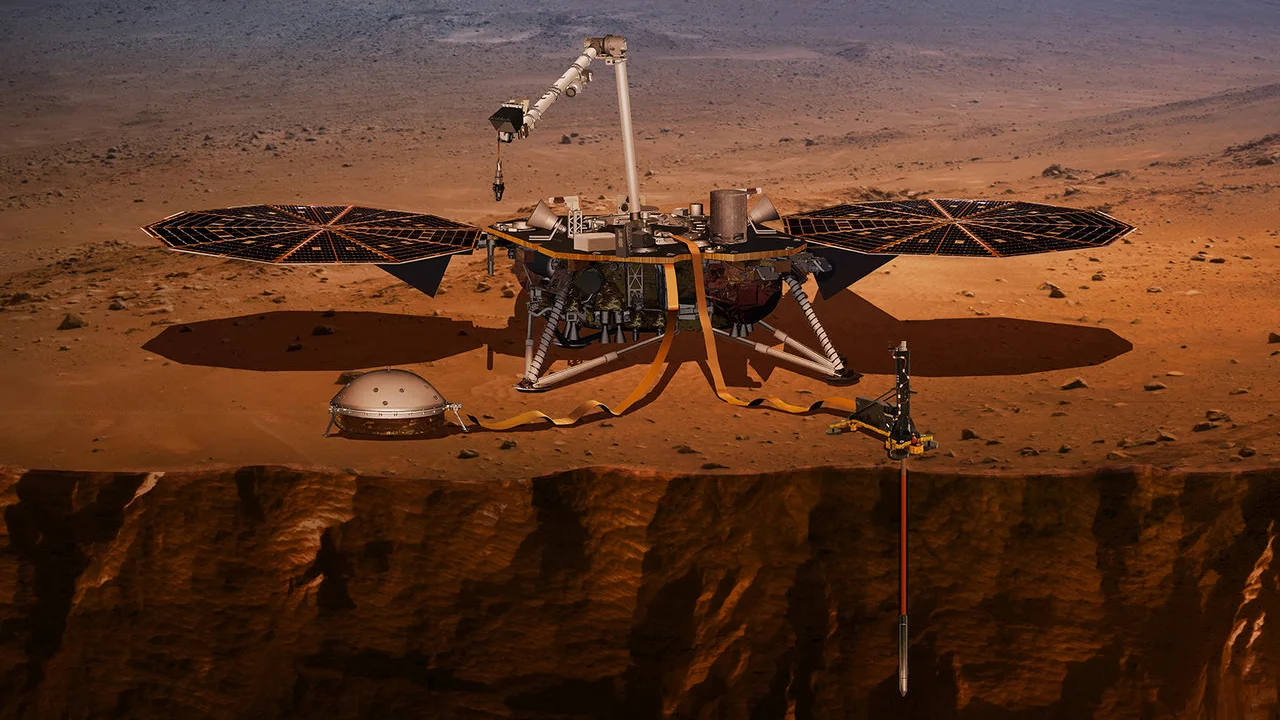
An artist impression of the InSight lander, with the robot's various science instruments highlighted, including the Heat Flow Probe (bottom left). Credit: NASA
Now, three months after it landed, InSight's HP^3 instrument is scheduled to begin hammering down into the surface in front of the lander, very soon.
The final depth the Heat Probe is meant to reach is about 4.5 metres or 15 feet.
Once it reaches that depth, the data it sends back will give scientists a good idea of how warm it is in Mars' interior - a crucial bit of knowledge to determine the evolution of the planet (and it may even provide us with hints or clarifications about other questions we've been asking about Mars - wait for it!).
Update: while the drilling began, the heat probe instrument subsequently ran into a rock that it could not easily dislodge or work past. Since the instrument had performed well under different test simulations in the lab, the team has paused, to determine what to do next.
APRIL
Parker Solar Probe perihelion #2
On April 4, NASA's Parker Solar Probe is expected to achieve its second close pass around the Sun (ie: perihelion).
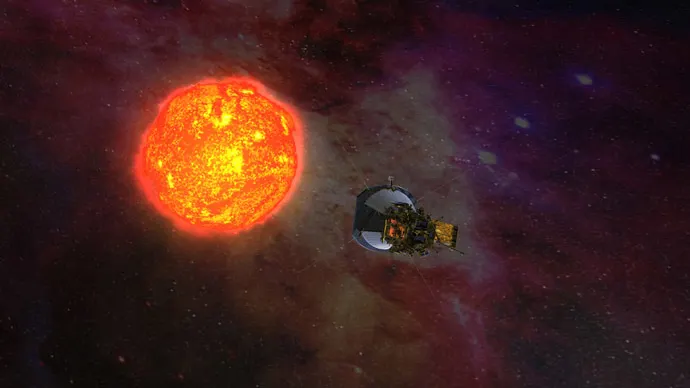
An artist conception of the Parker Solar Probe orbiting the Sun. Credit: NASA/JHUAPL
On this pass, the probe will match its first perihelion distance - 24.8 million km from the 'surface' of the Sun.
First spacewalk for David Saint-Jacques
Now having been on the space station for months, David Saint-Jacques, of the Canadian Space Agency, went outside the station on his first spacewalk on Monday, April 8.
He and NASA astronaut Anne McClain worked for 6.5 hours, laying down a redundant power line for the Canadarm2, and upgrading the station's wireless communication systems.
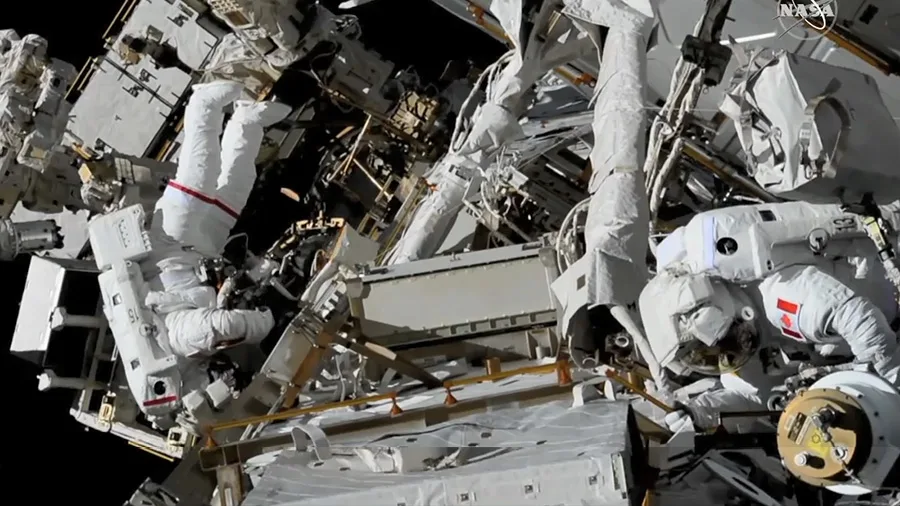
Anne McClain (left) and David Saint-Jacques (with the Canadian flag arm patch, on the right), work outside the space station on April 8, 2019. Credit: NASA
This should be the last spacewalk of this round, and of this particular space station crew.
Isreal attempts robotic landing on the Moon (Crashed)
Back in February, Isreal's SpaceIL team launched their lunar lander towards the Moon.
After over a month in space, slowly working its way towards its target, the Beresheet lander entered lunar orbit, and on April 11, the team made the final decision to go for touchdown.
Sadly, although the lander did make it to the surface, it did not survive the attempt.
Somewhere around 20 kilometres above the surface, Beresheet began to intermittently lose engine power, as well as communications with the control room back on Earth.
In the end, SpaceIL was unsuccessful in resolving these problems with the lander before it reached the surface, and it crashed.
The Beresheet lander did manage to capture an amazing image of the cratered lunar surface, from roughly 20 km up, prior to crashing.
On April 17, we learned the reason for Beresheet's failure, as news came out that a manual software command, uploaded to fix a sensor problem, inadvertently started a chain reaction that shut down the main engines. Without the ability to control its descent, the lander crashed into the surface.
First operational Falcon Heavy launch
Last year, we saw the very first launch of SpaceX's new tri-booster Falcon Heavy rocket, which put Elon Musk's Tesla Roadster into an orbit around the Sun that would take it out beyond Mars.
Re-watch the February 2018 Falcon Heavy test launch, below:
The company is expected to have their very first operational launch of this rocket system, which will carry actual functional payloads into orbit, now scheduled for April 11, as they launch Arabsat6A into geostationary orbit.
MAY
Honest-to-goodness 'Blue Moon'
So, in 2018, one of the biggest astronomy event was January's Super Blue Blood Moon Total Lunar Eclipse. As we explained during that event, the "blue" part of that title came from the fact that it was the second Full Moon in a calendar month.
Although that has become a popular definition, it is also an incorrect one.
The original, more official definition of a 'Blue Moon' is the third Full Moon in a season with four Full Moons.

Normally, there are three Full Moons every season. Every three years, though, or two years, if there's a leap year in between, the first Full Moon of a season will occur right when the season starts, or within a few days after. Since a lunar month is shorter than most calendar months, the three Full Moons that follow will also occur in that same season. The last time we saw this was in the spring of 2016.
For Spring 2019, Full Moons fall on the dates of March 20, April 19, May 18, and June 17. March 20 is also the date of the Vernal Equinox (in the northern hemisphere), however the actual timing of when the Sun crosses the celestial equator (5:58 p.m. EDT) is before the Moon becomes completely full (9:43 p.m. EDT), so it counts!
So, the May 18 Full Moon is the third Full Moon in the season, and thus an actual Blue Moon!
Note that the Moon will not actually turn the colour blue on that night, unless there are very specific, rare meteorological conditions present.
JUNE
SpaceX launches Canada's new RADARSAT Constellation mission
There are Canadians involved with some of the missions already mentioned (specifically New Horizons and InSight), but the first straight-up Canadian entry for 2019 is the RADARSAT Constellation Mission launch, originally scheduled for February 18.

An artist's conception of three satellites of Canada's RADARSAT Constellation. Credit: Canadian Space Agency
The RADARSAT Constellation Mission, aka RCM, is an Earth-observing mission, where three satellites flying in polar-orbiting tandem will use Synthetic Aperture Radar to map the surface of Earth at a resolution where each pixel of its resulting images will be 1 metre on a side. Not only will it provide us with ultra-detailed radar maps of Canada, but it will cover roughly 90 per cent of the Earth's surface.
SpaceX was scheduled to launch these three satellites atop a Falcon 9 booster rocket, as early as February 18, or as late as February 24, but due to the government shutdown, it was delayed.
The launch window for this mission, according to the Canadian Space Agency, is now on June 11, 2019.
Canadian astronaut David Saint-Jacques returns to Earth
If you didn't know already, there's a Canadian in space, right now! CSA astronaut David Saint-Jacques flew up to the International Space Station in early December!
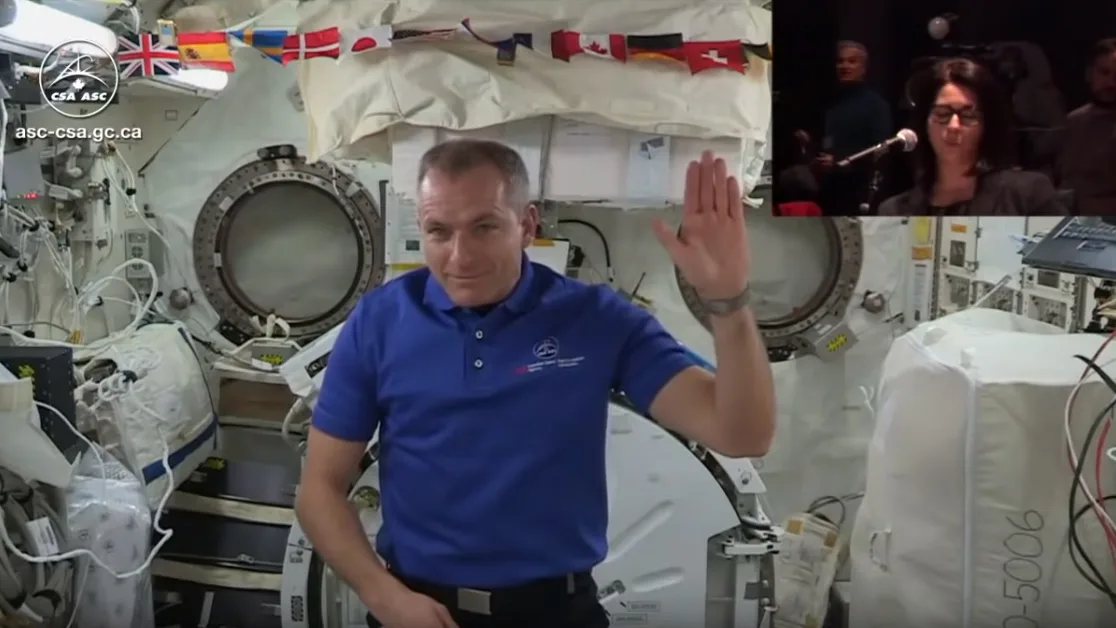
David Saint-Jacques, wearing his Canadian Space Agency polo during a press conference from space, as he answers media questions on December 10, 2018. Credit: NASA/CSA
David is working hard up on the space station, conducting science experiments, maintaining the station, and answering questions from young and old alike down here on Earth.
If all goes as planned, he and his fellow members of the Expedition 58 crew, NASA astronaut Anne McClain and Russian cosmonaut Oleg Kononenko, will be returning home on June 24!
JULY
Total Solar Eclipse
In August of 2017, those of us in North America were treated to an absolutely amazing Total Solar Eclipse. On July 2, 2019, the southern hemisphere will get the same treat!
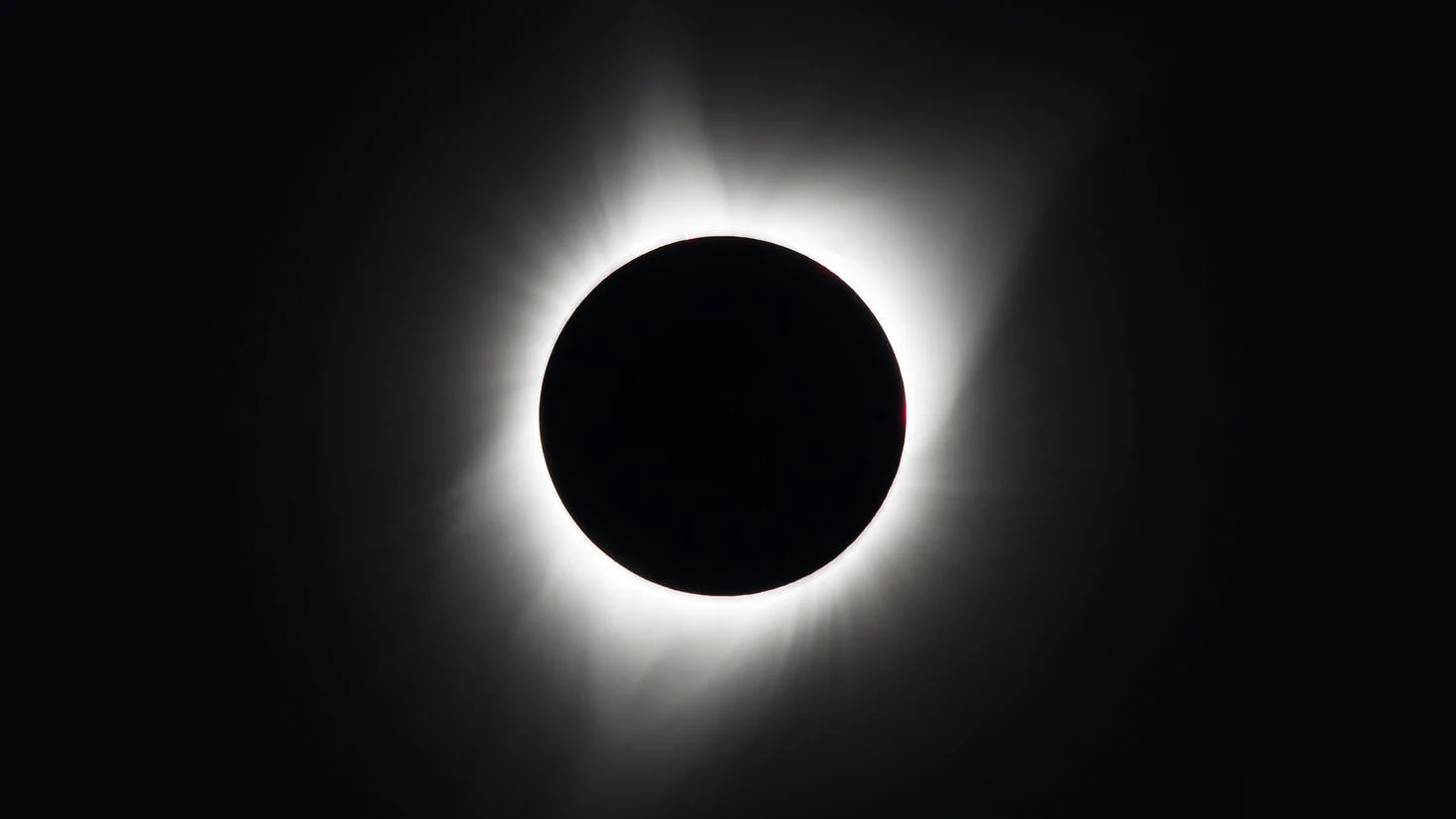
The Total Solar Eclipse of August 21, 2017, from Madras, Oregon. Credit: NASA/Aubrey Gemignani
The path of totality of this solar eclipse will be mostly over the south Pacific Ocean, but it will also cross central Chile and Argentina towards its end.
Expect some great online coverage of this event!
India's Chandrayaan-2 lander/rover launches to the Moon
Sometime later this year, China will no longer be the only nation with a robot roving around on the lunar surface.
India is getting ready to launch their Chandrayaan-2 mission, which will put a spacecraft orbiting the Moon, plus set a lander and a rover down near the lunar south pole. This follows up on their 2008 Chandrayaan-1 mission, which put an orbiter around the Moon, and sent the Moon Impact Probe to strike the surface near the south pole.
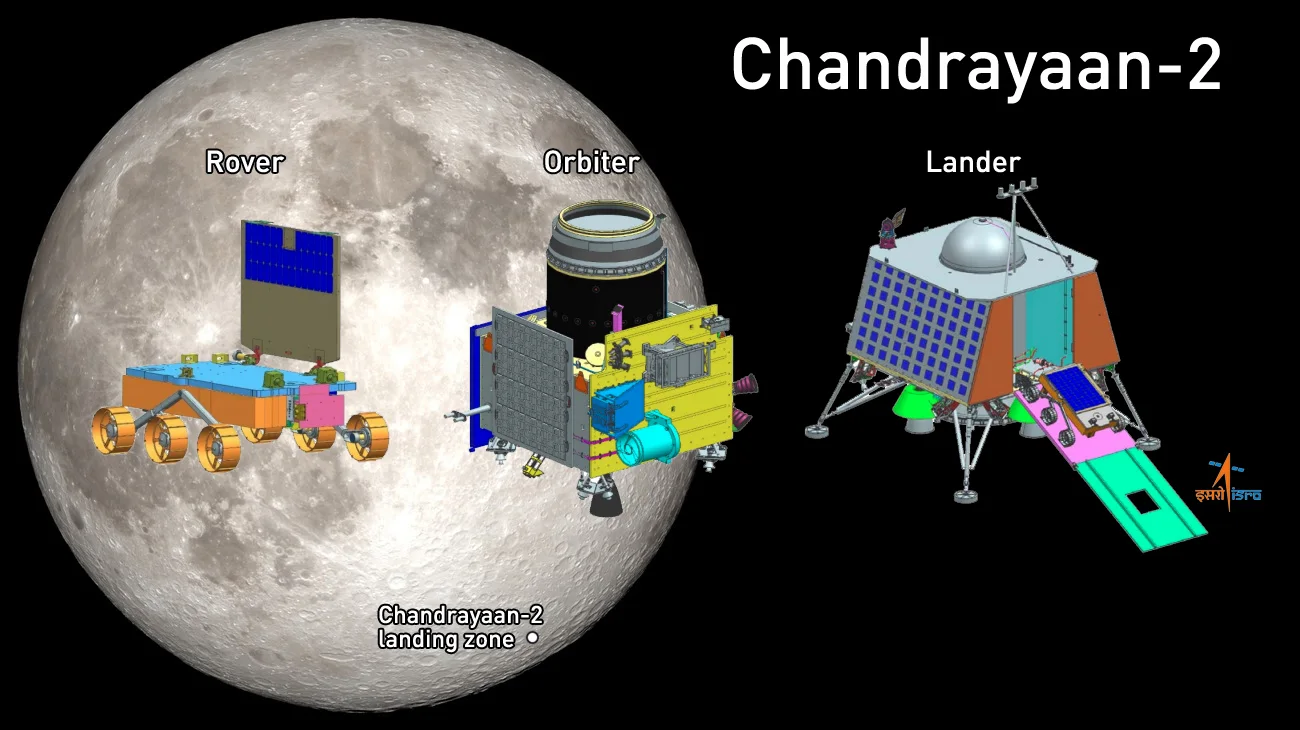
ISRO's Chandrayaan-2 mission, including its three components, and its intended landing zone, between craters Manzinus and Simpelius, near the Moon's south pole. Credit: ISRO/NASA GSVS/Scott Sutherland
Although this mission was originally set to launch sometime in January, according to Space Watch Global, the Indian Space Research Organization (ISRO) decided to postpone until mid-April, as there were tests to be done on the spacecraft, which could not be completed for the earlier launch date.
As the launch date drew closer, however, there was news of some damage to the legs of the Vikram lander, which has now delayed the launch until sometime in the second half of 2019.
In a new update, as of May 1, ISRO says they are now targetting their launch for July 14, with a possible lunar landing date of September 6.
When these two new robots finally reach the Moon, they are only expected to run for about 15 days after landing. However, this is a huge step for a nation that only recently got into the planetary exploration game. Watch for more on this, to come!
50th anniversary of Apollo 11 lunar mission
On July 16, 1969, Astronauts Neil Armstrong, Edwin "Buzz" Aldrin and Michael Collins launched on the very first crewed mission to the Moon!
Roughly 4 days later, Armstrong and Aldrin accomplished what is considered to be among the biggest accomplishments in human history, as they became the first people ever to set foot on an astronomical body other than Earth.
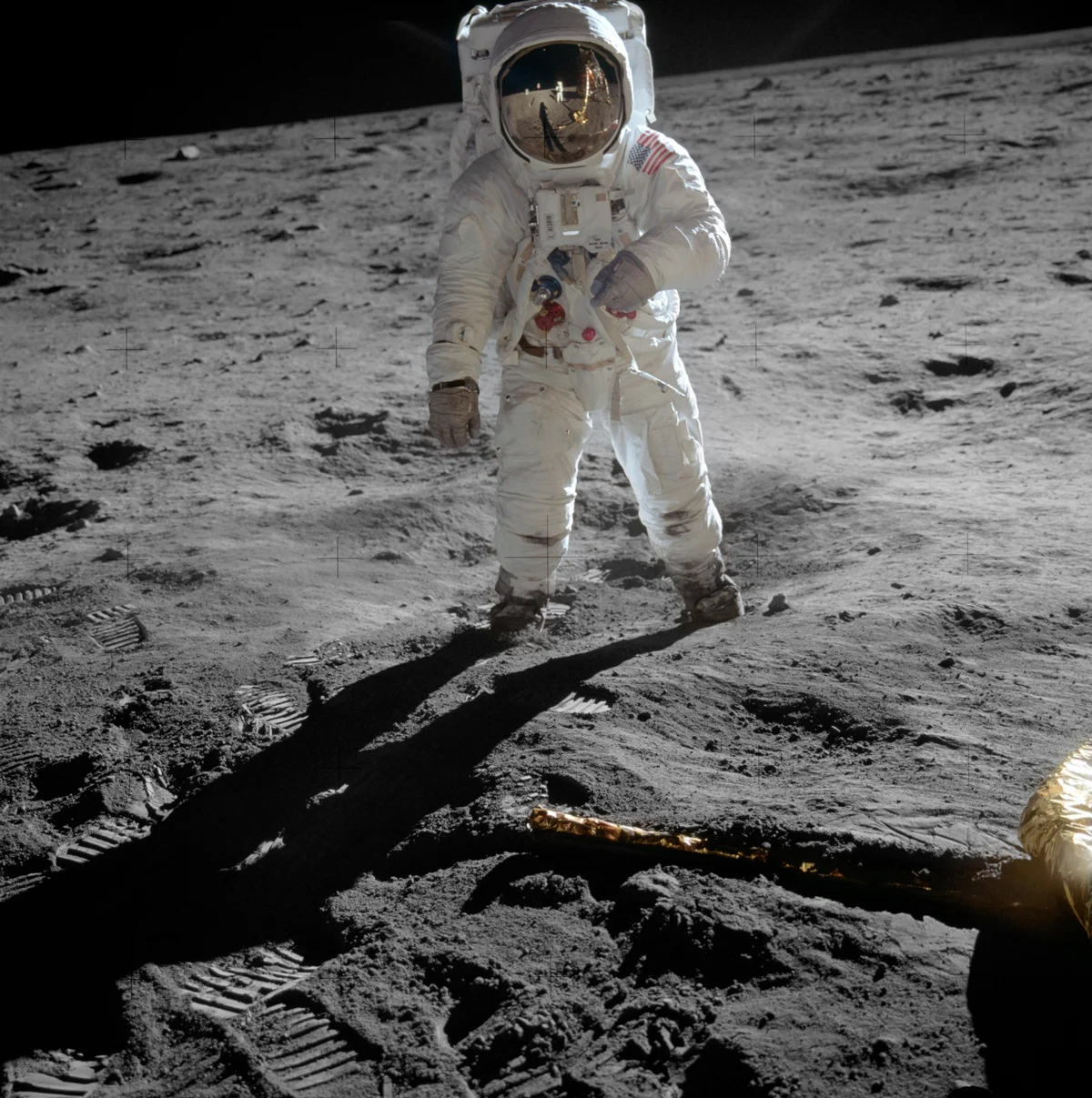
Edwin "Buzz" Aldrin poses on the lunar surface, with Neil Armstrong and the lunar module reflected in his helmet visor. Credit: NASA
This year is the 50th anniversary of this amazing accomplishment, and stand by for some epic celebrations to mark the date!
AUGUST
Orbital insertion of India's Chandrayaan-2 lunar orbiter and lander
Having successfully launched into space on July 22, India's Chandrayaan-2 has been slowly increasing its orbital distance from Earth, is set to reach lunar orbit on August 20.

Credit: ISRO
After orbiting for about two weeks, the lander is expected to detach and touch down on September 6.
SEPTEMBER
Parker Solar Probe perihelion #3
The beginning of September will see the third swing around the Sun for NASA's Parker Solar Probe, and its last pass at this distance, before it plunges even deeper into the solar corona.
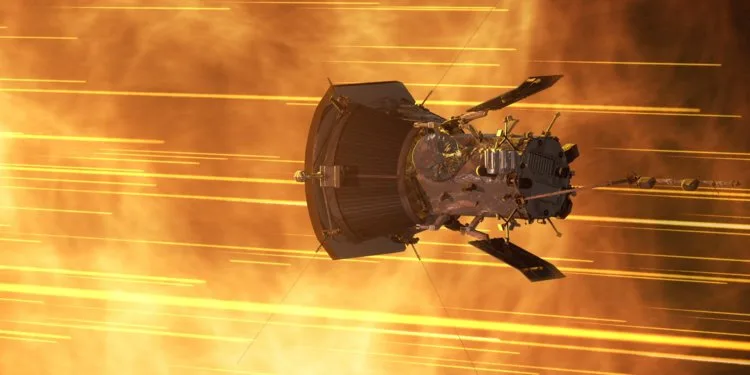
The Parker Solar Probe flies through the solar corona. Credit: NASA GSFC
Chandrayaan-2 lands on the Moon
India's lunar lander, Vikram, which is riding to the Moon on the Chandrayaan-2 mission, is expected to touch down on the Moon's surface on September 7.
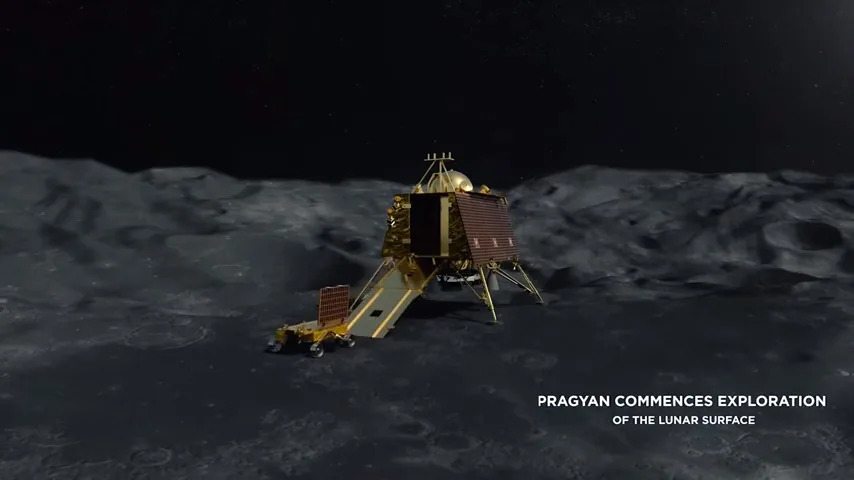
Credit: ISRO
This lander, and its Pragyan rover, are expected to explore the lunar surface for 14 days.
Boeing test launch of uncrewed CST-100 Starliner
SpaceX isn't the only company designing spaceships to carry crews to the International Space Station. Boeing is developing their CST-100 Starliner, as well.
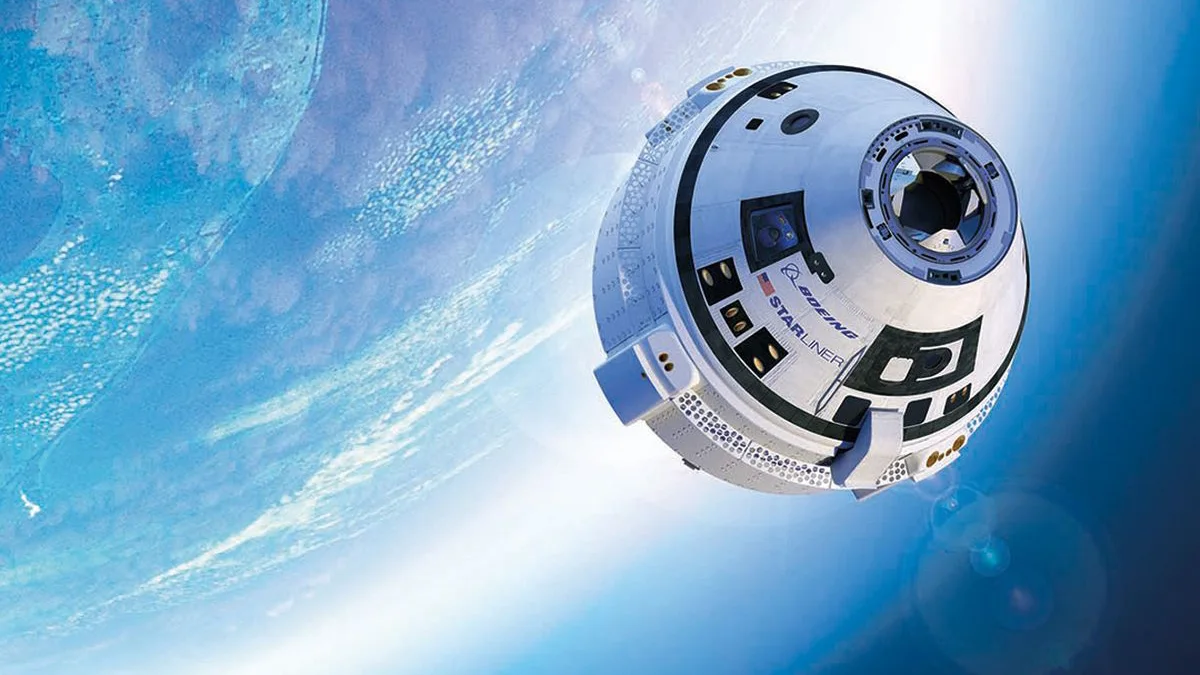
An artist conception drawing of Boeing's CST-100 Starliner spacecraft reaching orbit. Credit: Boeing
The first un-crewed test launch of this new spacecraft was expected to happen sometime in March, however Boeing delayed the test flight until at least September 17.
OCTOBER
Operational SpaceX Crew Dragon flight to the ISS
2019 is a very exciting year in the timeline of human space exploration, as we once again - after a gap of over 8 years - see more than one route to the International Space Station.

A computer simulation of the Crew Dragon, on approach to the International Space Station. Credit: SpaceX
In October, at least if everything goes as planned, SpaceX opens the second path to that orbital science outpost.
NOVEMBER
Transit of Mercury
On November 11, 2019, Mercury - the innermost planet to our solar system - will transit across the face of the Sun!
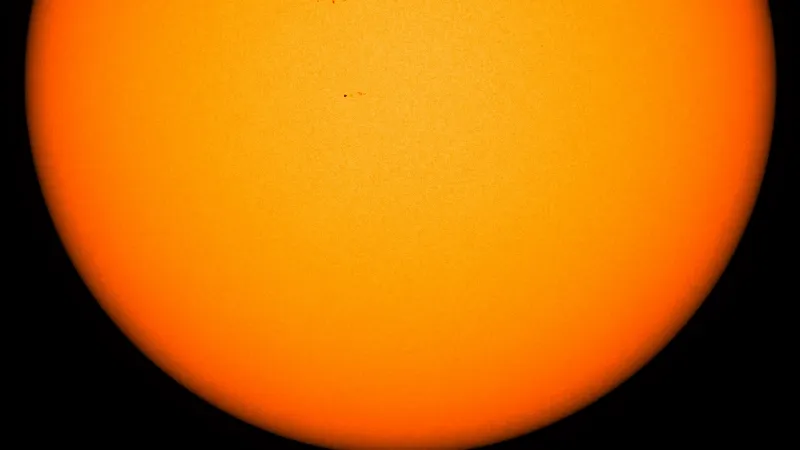
This animation shows the May 9, 2016 transit of Mercury, captured by NASA's Solar Dynamics Observatory. During the Nov 11, 2019 transit, Mercury's path will take it on more of a northerly angle across the face of the Sun. Credit: NASA/SDO
Like July's total solar eclipse, this event is another one that we're going to see plenty of online coverage.
If you would like to observe the transit for yourself, according to Fred Espenak, from the RASC Observer's Handbook 2019, a telescope with 50x or 100x magnification should be good enough, if it is equipped with a proper solar filter.
Please, do not, ever, stare directly at the Sun without proper protection for your eyes. This is especially true if you are using a telescope or binoculars, as you do not want to focus unfiltered sunlight, through magnifying lenses, at your eyes. This applies even if using eclipse glasses, since the focused sunlight may burn right through the Mylar film. Use eclipse glasses when looking just with your eyes, or a solar filter that caps the end of the telescope (older 'welding glass' eyepieces, that screw into the ocular piece, are not recommended). To do otherwise risks permanent injury, or possibly even blindness.
NASA's Solar Dynamics Observatory will certainly capture it, as will as - I'm sure - any major telescope on this side of the planet that has available time. So, keep a lookout for the amazing imagery to come from this event, and check for any astronomy clubs or observatories that may have viewing parties going on that day!
SpaceX Crew Dragon test flight into space (Delayed)
Originally, if SpaceX was to stay on schedule, we would have been seeing their first crewed Crew Dragon test flight - that is, complete with human crew members, that will travel into space - launch sometime in June!

A computer simulation of the Crew Dragon flying in orbit of the Earth. Credit: SpaceX
Although the first uncrewed flight went perfectly, the resulting explosion of the capsule on the test pad after the mission ended, set the timetable back by months.
November 15 is the date set by NASA for the launch of a crewed Dragon 2 into space. Stay tuned for more news and updates on this, as they come in.
50th anniversary of Apollo 12 lunar mission
With seven different crewed lunar landing missions - Apollos 11 to 17 - from 1969 to 1973, we're going to have over four years of major space anniversaries to celebrate, and November 14 to 24 is the 50th anniversary of the Apollo 12 mission.
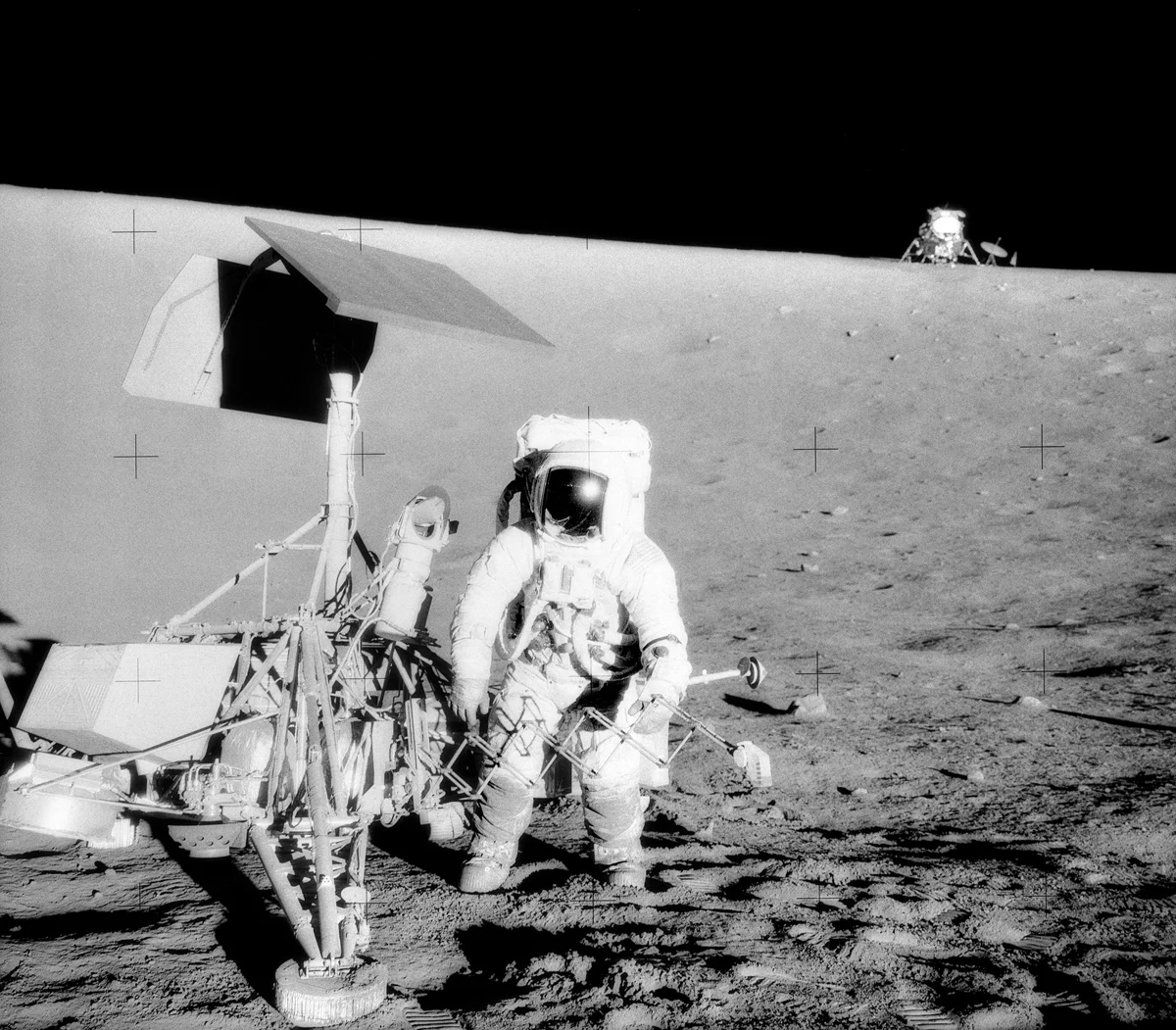
Apollo 12 commander Charles Conrad Jr stands near the Surveyor 3 robotic lander, on November 20, 1969. Credit: NASA
Landing near the southern end of Oceanus Procellarum (the Ocean of Storms), the crew set the lunar module down almost right beside a previous robotic lander - Surveyor 3.
We hear so much about Apollo 11 for its groundbreaking achievement, and Apollo 13 for its drama, but the next four years will be amazing for re-acquainting ourselves with what all of these missions accomplished!
BONUS (MORE NEW MOON LANDINGS!)
Moon Express' Lunar Scout and Lunar Outpost missions, TeamIndus' HHK1 lander and ECA rover, and Synergy Moon's lander and rover (which may piggyback with TeamIndus' mission) may all (potentially) launch in 2019. The last finalist team, Japan's Hakuto, was apparently also going to ride with TeamIndus, however their launch contract was cancelled. It is possible they may still put their lander and rover on the Moon in 2020.
There is A LOT going on this year than what has been listed here. There is, seriously, just too much to put down in a simple list. Keep coming back here throughout the year for additions, corrections and scheduling changes, and keep checking out the The Weather Network's Space News page for more space content.
